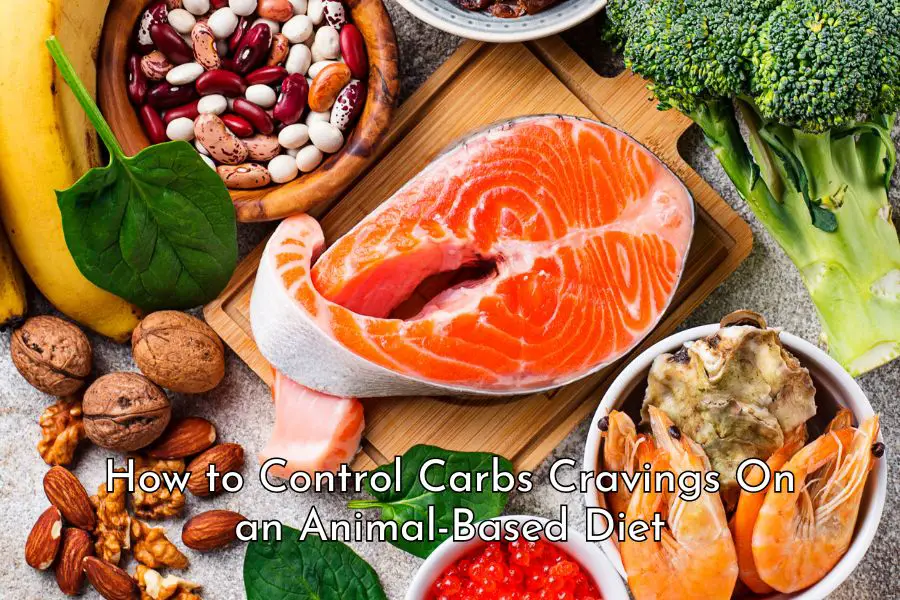Raising children on a carnivore diet or an animal-based diet can be challenging in today’s food environment, but it is definitely achievable with the right approach. In this post, we will provide you with some practical tips to smoothly transition from a standard Western diet to a healthy carnivore or animal-based diet that meets your children’s nutritional needs and help them thrive.
1. Educate yourself
To raise your children on a healthy diet, you will need to do a lot of research and have a clear picture of what a healthy diet look like so that you know what to shop for and how to plan their daily meals.
Currently, there is an ongoing debate over whether a carnivore diet or an animal-based diet is optimal for humans.
Our view is that if your children face chronic health issues such as autoimmune conditions, going full carnivore can help resolve those (please check out how the ICMNI uses a strict version of the carnivore diet to successfully treat patients with chronic health problems).
On the other hand, if your children are generally healthy and free from chronic health issues, a low-carbs animal-based diet can be a good option and is a lot less challenging to implement. This diet primarily centers around high-quality meats supplemented by good quality carbohydrate sources.
However, this is just our view based on our research and experience. If you’re passionate about health and nutrition and desire the best for your children, we strongly encourage you to put on your critical thinking cap, conduct independent research, and analyze hard evidence. Read peer-reviewed articles, explore anecdotal accounts, study anthropology, learn to read food packaging and do not trust anyone with vested interest to tell you what you should eat. By doing so, you can arrive at your own informed conclusion regarding the best diet for you and your family’s unique needs and circumstances.
This is not an easy task at all. There is so much confusing information out there and with our food chain being controlled by large profit-driven corporations who don’t have our best interests at heart, it is no wonder why we are currently facing the unprecedented global obesity epidemic. However, we believe the journey is totally worth it because there is nothing more valuable than our health and the well-being of our children.
2. Lead by example
Children often mimic the eating habits of their parents and caregivers so the best way to introduce your children to a healthy diet is to be on one yourself.
Children are like sponges, ready to absorb information from their environment. If they see you enjoying meat at every meal, they will be more likely to accept it as the norm. If meat dishes are offered to them at every meal, they will become familiar with its taste and texture and will be more likely to accept it as a regular part of their own diet. And if they see you eating just meat and looking happy, healthy and in great shape, they may question the concept of a healthy diet as taught to them at school.
Family meals are also a great time for bonding. When meat dishes are consistently served at family meals, it becomes a shared experience and part of treasured memories. As a result, your children are more likely to associate meat with positive emotions and a sense of belonging, making them more open to incorporating it into their own diets now as well as when they grow up.
3. Gradual transition
Unless you are trying to address urgent health issues for your children (in which case, time is of the essence and a swift transition to a strict carnivore may be needed), gradually transitioning from a Western-style diet to a carnivore diet or a healthy low-carbs animal-based diet is likely to be easier and cause less dramas.
Gradually introducing more animal-based foods into your children’s diet will be more gentle on their bodies as it give them time to detox and adjust to the new diet. Adaptation problems, therefore, are less likely to be severe.
For example, if your children have been on a standard American diet, which often includes cereal for breakfast, ham sandwiches for lunch, and pizza for dinner, slowly replacing sugary and ultra-processed food with healthier options can help them avoid dealing with an avalanche of adaptation issues such as headaches, brain fog, diarrhea, bad breath, constipation, night sweats, fatigue, and carb craving.
Children are also less likely to protest if you make a gradual transition to a meat-centered diet instead of a radical shift.
Below is an example of order of transition that you may consider when designing your own approach.
(i) Cut out seed oils
Cutting out all seed oils (e.g. canola oil, sunflower oil, soybean oil, rice bran oil, and corn oil) and replacing them with healthier options such as beef tallow, lard, butter, or ghee is the first step to a healthier diet.
We recommend doing this first because seed oils are harmful for human health and you can easily eliminate them from your children’s diet without them noticing.
These seed oils are ultra-processed food that has only been introduced to the human diet in the last hundred years or so. The incorporation of these seed oils which are extremely high in omega 6 fatty acids result in an imbalanced omega 6 to omega 3 ratio in our diet. While our ancestors’ omega 6 to omega 3 ratio is about 1:1, in today’s Western diet, this ratio has ballooned up to around 15:1. Excessive intake of omega-6 fatty acid has been linked to a variety of health problems including inflammation, heart disease, obesity, rheumatoid arthritis, Alzheimer’s disease, and cancer. [1, 2, 3, 4, 5]
We recommend using beef tallow, lard, butter, or ghee which have better omega 6 to omega 3 ratios and are less prone to oxidization. If you are interested, please check out our in-depth discussion on why animal fat, butter or ghee are a much healthier options than plant-based cooking oils.
(ii) Drop vegetables
The next thing that is easy to drop is vegetables because it is unlikely that your children will miss them.
Vegetables can be extremely high in essential nutrients, however, a key problem with them is they can be very high in plant toxins and anti-nutrients as well and consuming in large quantities can cause serious health issues. Therefore, our view is that you can omit vegetables because animal-based foods can provide your children with all the nutrients that they need including all the essential vitamins and minerals. [6]
Your children may have enjoyed vegetables in the past when they are cooked with seasonings, oils, meat, chicken and fish. However, on their own, vegetables are likely to be very bland. If your children ask for vegetables, continue to offer vegetables on their own like steamed, boiled, baked or roasted and it is unlikely that they will consume them in any significant quantity.
(iii) Make quality meat the center of their diet
Making quality meat such as beef, lamb and goat the center of your children’s diet and offer a variety of choices to ensure that they get all the essential nutrients for their growing needs.
All animal-based foods including beef, lamb, goat, pork, chicken, eggs, seafood, and dairy are extremely nutrient dense. However, in our view, ruminant meat, fat, and organs are the best quality food that you can feed your children due to their better nutritional profiles and generally better raising practices.
While ruminant meat is recommended as a primary source, offering other options like chicken, pork, eggs, seafood, and dairy (if well tolerated) occasionally can ensure a diverse nutrient intake and make it easier for your children to meet all their nutritional needs. For instance, fatty fish is an excellent source of omega-3, critical for brain development, and dairy provides essential calcium for bone health and development, both of which are relatively lower in muscle meat.
However, it’s important to cater to your children’s preferences as well. If they favor certain animal-based foods like chicken, eggs, and pork over beef, lamb, or goat, don’t hesitate to incorporate these regularly into your family meals. Don’t let perfection be the enemy of the good, even though they may not be the best options, they are still extremely nutrient-dense, highly bioavailable and free from anti-nutrients.
If you can afford, always opt for organic, grass-fed, and free-range animal products whenever possible as they tend to be more nutritious and flavorsome and have fewer potential contaminants like pesticides and antibiotics.
If your children are initially hesitant about meat, start by offering small portions alongside other familiar foods and gradually increase the amount of meat over time. It may take multiple exposures over a period of time for them to develop a taste for it. In addition, present meat in an appealing way and experiment with different cooking methods, flavors, and seasonings to make it more enticing to your children as well as figure out what they enjoy the most.
(iv) Eliminate or replace processed food with home-made options
Processed food which is often high in added sugar, unhealthy fats, additives, and empty calories causes so many health problems and should be eliminated from your children’s diet. [7]
If your child is used to having a lot of processed food (e.g. chips, cookies, candy, crackers, breakfast cereals, soft drinks, sugary drinks, muffins, donuts, French fries, burgers, pizza, frozen meals, etc), start by gradually replacing them with healthier homemade options. Sudden changes are likely to be met with resistance, so it’s best to take it step by step.
Here are some suggestions:
- Prepare high protein breakfasts: replace cereal or jam toasts with protein-rich breakfasts like bacon and eggs, scrambled eggs, sausages, egg and cheese pancakes. Make sure that their first meal of the day is high in protein and fat and low in carbs because it will keep your children satiated for a long time and avoid the carb roller-coaster
- Pack healthy school lunch for your children: If your children go to school, pack nutritious lunches to avoid high-carb and unhealthy canteen dishes. Options include meatballs, bunless burgers, sausages, crust-less quiches (made from eggs, minced meat, cheese, and seasonings), sashimi, carnivore fish fingers, boiled eggs, plain whole milk yogurt with chopped fruits, etc. You can include some vegetables if your children ask for them, but ensure the bulk of their meals consist of quality meat
- Replace sugary sodas and juice with water: Opt for water as the main beverage. If your children don’t have dairy sensitivities, plain full cream milk is also a good option
- Replace commercial snacks with healthier choices: Replace store-bought snacks with fruits or homemade options like beef jerky, pemmican, pork crackles, yogurt, or carnivore ice-cream
- Make your own sauces and dressings: Many commercial sauces and dressings come loaded with added sugars and unhealthy fats. Opt for homemade versions using simple ingredients like bacon grease, cold-pressed olive oil, vinegar, lemon juice, herbs, and spices.
A good thing about a carnivore diet or a healthy animal-based diet is that once your children become accustomed to eating just animal-based food or mostly animal-based food plus a small amount of carbs, it is likely that they won’t like to eat ultra-processed food anymore because it will generally make them feel unwell. If you are used to eating just meat or meat plus a bit of fruits, one day when you eat a bowl of pasta or half a pizza, your body will tell you in no subtle way that these foods are not good for you.
(v) Limit carbohydrates
Western style diets are typically very high in carbohydrates which can have negative impacts on our and our children’s health. [8]
All carbohydrates, whether considered good or bad, simple or complex, are converted into sugar in the blood stream and provide an immediate burst of energy. Because our body tightly controls the level of blood sugar, once it detects a rise in blood glucose, the pancreas will go to work and release insulin to normalize blood sugar by allowing cells in the muscles, fat, and liver to absorb glucose. [9]
However, once blood glucose decreases and normalizes, there is a sudden drop in energy levels (also known as a sugar crash) that lead to the feelings of hunger and fatigue, we’ll want to eat again. And if we have another high-carb meal or reach for some high-carb snacks, the cycle of rapid insulin production and subsequent sugar crashes continues.
This pattern of high carb intake over time can contribute to obesity and other metabolic issues. On the other hand, there is significant evidence supporting the potential health benefits of low-carb diets in various conditions, including weight loss, cardiovascular disease, diabetes, cancer, epilepsy, and neurological diseases. [10, 11, 12, 13, 14, 15]
It’s also worth noting that throughout human history, our ancestors primarily relied on a diet consisting of just meat from large herbivores, with carbohydrates and plant-based foods becoming prominent only since the advent of agriculture. [16]
However, it is very challenging to keep your children on a low-carb diet in today’s food environment with schools promoting high-carb diets like MyPlate or The Eatwell Guide, their friends eating high-carb foods, celebrations often featuring unhealthy, processed and carbs-rich foods, and food courts offering similar options.
Carbohydrate-rich food is delicious and addictive and cutting it out altogether and going carnivore is likely to be very hard. If you can do it, congratulations! You are one of the very rare few who succeed. If you find it challenging, an approach that can work is gradually increasing the amount of meat and animal fat in their diet while simultaneously reducing carbs intake. In addition, explaining to your children about the health implication of excessive carb consumption, especially the ultra-processed store-bought foods, can also be helpful.
If you are looking for low-toxin carb options, please check out our article on the best sources of carbohydrates on a meat-based diet.
4. Involve your children in shopping, meal planning, and preparation
Taking your children grocery shopping and involving them in meal planning and preparation can be a great way to teach them about healthy food choices and establish good eating habits from an early age.
Take your children grocery shopping with you and use this opportunity to explain to them why you choose certain foods over others. For example, you can talk about why you prefer fresh beef over corned beef and home-made meatballs over ready-made ones, why you pick free-range eggs instead of caged eggs, why you want preservative-free sausages, or why you say no to fruit juice but fresh fruit is okay.
You can also talk to them about the nutritional benefits of meat, such as its role in providing essential proteins, vitamins (like B12 and iron), and minerals. Explain to them how these nutrients support their growth, energy levels, and overall well-being and why you prefer to get these nutrients from animal-based food over plant-based food.
Furthermore, involving your child in meal planning and preparation can be a fun and educational experience as well as an opportunity to spend quality time together. When they help prepare food, they are more likely to try out and enjoy their own cooking. It also teaches them important skills that they’ll need when they grow up and live independently.
5. Be patient and flexible
Transitioning to a carnivore diet or a low-carb animal-based diet is no small feat and can take a long time so it’s important to remain patient and stay flexible in your approach.
If you have toddlers or primary school-age children, the task is likely to be a lot easier because you have a big if not total control over what your children eat.
However, if you have middle or high school children who may start working odd jobs to earn money, spend a lot more time with their friends and tend to be influenced a lot by their friends’ behaviours including eating habits, your job can be a lot more challenging.
If you have teenagers who are currently on a vegetarian or a vegan diet because they believe such a diet is healthy and good for the environment, the transition can be a really daunting task.
For older children, you can reason with them and it is important to engage them in open and non-judgmental conversations about their dietary choices and health implications. Encourage them to explore the reasons behind their choices and the potential impact on their well-being. Be supportive and provide them with evidence-based information about the benefits of a carnivore or low-carb animal-based diet.
There will be moments of triumphs and setbacks along the way, but it’s important to remain patient and believe in yourself. When you have your children’s best interests at heart and approach the change with empathy and understanding, you will make progress. And do not allow yourself to give up, your children’s health and their future depend upon you and they are far too important to surrender.
Conclusion
In conclusion, raising children on a healthy diet requires education, patience, and leading by example. Gradual transitions to a meat-centered diet, involving children in meal planning, and being flexible in approach are crucial. By providing them with the necessary knowledge, you empower your children to make better dietary choices and ensure they are well prepared for their future health and well-being.
Other posts you might be interested in:
Best Sources of Carbohydrates On a Meat-Based Diet
How to Help a Loved One Lose Weight Successfully
How to Carnivore Diet While Traveling
How Long Does It Take to See Results on the Carnivore Diet?
Is the Carnivore Diet Unhealthy Long-term?
What Is the Best Meat to Eat on the Carnivore Diet?
Carnivore Diet for Beginners: 15 Tips for Success
What Are the Best Ways to Cook Meat on the Carnivore Diet?
Is Carnivore the Best Anti-Aging Diet Around?
11 Common Carnivore Diet Mistakes
Disclaimer: The information in this post is for reference purposes only and is not intended to constitute or replace professional medical advice. Please consult a qualified medical professional before making any changes to your diet or lifestyle. Please check out our disclaimer for more detail.





